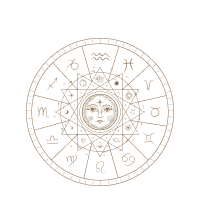
Harmonizing Mind with Repetitive Meditation Practices
Discover the art of finding inner peace through repetitive meditation techniques designed to harmonize the mind and promote tranquility.
article by Hina Kurosawa
Introduction to Repetitive Meditation
Meditative practices have traversed through ages, embedding themselves in various cultures and traditions. In the modern sanctuary of calmness, repetitive meditation techniques stand out for their simplicity and profound impact on an individual's peace of mind. These techniques are typically characterized by a consistent pattern, whether it's the repetition of sounds, words, breathing, or movements. This repetition serves as the foundation for mental stability and mindfulness. As our world becomes increasingly frenetic, such practices provide a refuge for those seeking serenity amidst chaos.

The Essence of Mantras in Meditation
Within the galaxy of meditation practices, the use of mantras occupies a revered space. A mantra is a word or phrase, often in Sanskrit, that is repeated to aid concentration during meditation. The vibrational quality of mantras can be a potent tool for aligning one's energy and fostering an environment of quietude. Across various traditions, the repetition of these sacred syllables is believed to clear the mind and connect the meditator to a higher consciousness. Recent studies in neurology suggest that the rhythmic nature of mantra recitation can enhance neural plasticity and promote a sense of well-being.

Practicing Mindful Breathing
Another cornerstone of meditation is the focus on the breath, a technique that transcends cultural boundaries. Conscious breathing, or pranayama in the yogic tradition, is a method where one pays close attention to the inhalation and exhalation patterns. Through this attentive breathing, practitioners can influence their autonomic nervous system, leading to reduced stress and improved emotional regulation. This connection between breath and tranquility mirrors the body's inherent rhythms, like the heartbeat, encouraging a natural state of relaxation.

Integrating Movement in Meditation
Meditation doesn't always necessitate stillness. In fact, repetitive movement can be an effective meditative practice. Techniques such as walking meditation or the fluid sequences of Tai Chi incorporate gentle, cyclic motions that promote focus and mindfulness. These movements, when synchronized with breath, build a bridge between body and mind, enhancing physical balance and mental clarity. In the age of fitness consciousness, such dynamic meditation techniques have seen a surge in popularity for their dual benefits on health and peace of mind.

Emergence of Digital Meditation Aids
Advancements in technology have ushered a new era for meditation practitioners. With apps and virtual reality programs designed to guide users through meditation routines, there is an increasing prevalence of digital tools to support repetitive meditation practices. These aids often include guided visualizations, ambient sounds, and repetitive language patterns to engage the user's senses and encourage deeper meditation. This digital assistance is becoming a staple for many practitioners, particularly appealing to those who might be new to meditation or who live in bustling urban environments.
The Path Toward Mastery
While repetitive meditation techniques may seem straightforward, their mastery calls for patience and persistent practice. The nuances of each technique can take time to understand and incorporate effectively into daily routines. For individuals committed to the path of inner peace, these methodologies promise gradual and profound spiritual growth. Seasoned meditators often speak of reaching a pivotal moment when repetition transcends into deep meditative absorption, a state known as 'dhyana' in Sanskrit, where the practitioner experiences total immersion in the moment.
Published: 1/8/2024
Modified: 1/8/2024
More predictions
Come back here soon to learn more about yourself and your future


Mastering Japa Meditation Practices
Discover the serene art of Japa Meditation and elevate your spiritual journey through chanting and mindfulness.


Meditation Techniques For OCD
Mindful practices to help manage Obsessive-Compulsive Disorder symptoms effectively through meditation.


Jain Meditation Techniques for Inner Peace
Discover the serenity and spiritual depth of Jain meditation practices in a comprehensive article tailored for modern seekers.